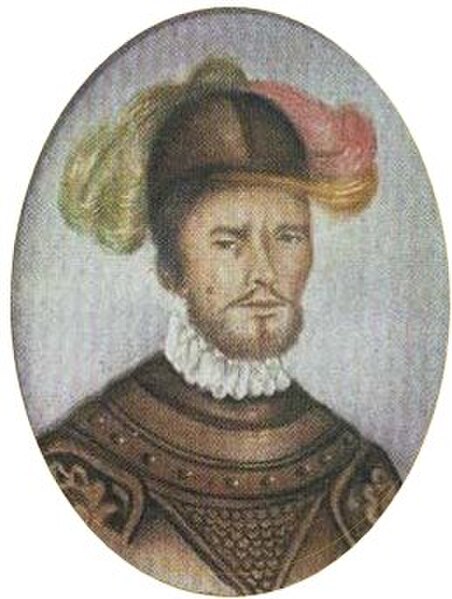Pedro de Ursúa was a Spanish conquistador from Baztan in Navarre. He is best known for his final trip with Lope de Aguirre in search for El Dorado, where he was assassinated in a plot by a fellow officer.
Pedro de Ursúa
Former tower house of the Ursúa in Arizkun, Navarre
El Dorado is commonly associated with the legend of a gold city, kingdom, or empire purportedly located somewhere in the Americas. Originally, El Hombre Dorado or El Rey Dorado, was the term used by the Spanish in the 16th century to describe a mythical tribal chief (zipa) or king of the Muisca people, an indigenous people of the Altiplano Cundiboyacense of Colombia, who as an initiation rite, covered himself with gold dust and submerged himself in Lake Guatavita.
The zipa, a mythical tribal chief of the native Muisca people, was said to cover his body in gold dust, and from his raft offer treasures to the Guatavita goddess in the middle of the sacred lake. This old Muisca tradition became the origin of the legend of El Dorado. This Muisca raft figure is on display in the Gold Museum, Bogotá, Colombia.
Nieuwe caerte van het Wonderbaer ende Goudrjcke Landt Guiana by Jodocus Hondius (1598) shows the city of Manoa on the northeastern shore of Lake Parime
Trinidad and Tobago stamp featuring the 'Discovery of Lake Asphalt by Raleigh, 1595'





